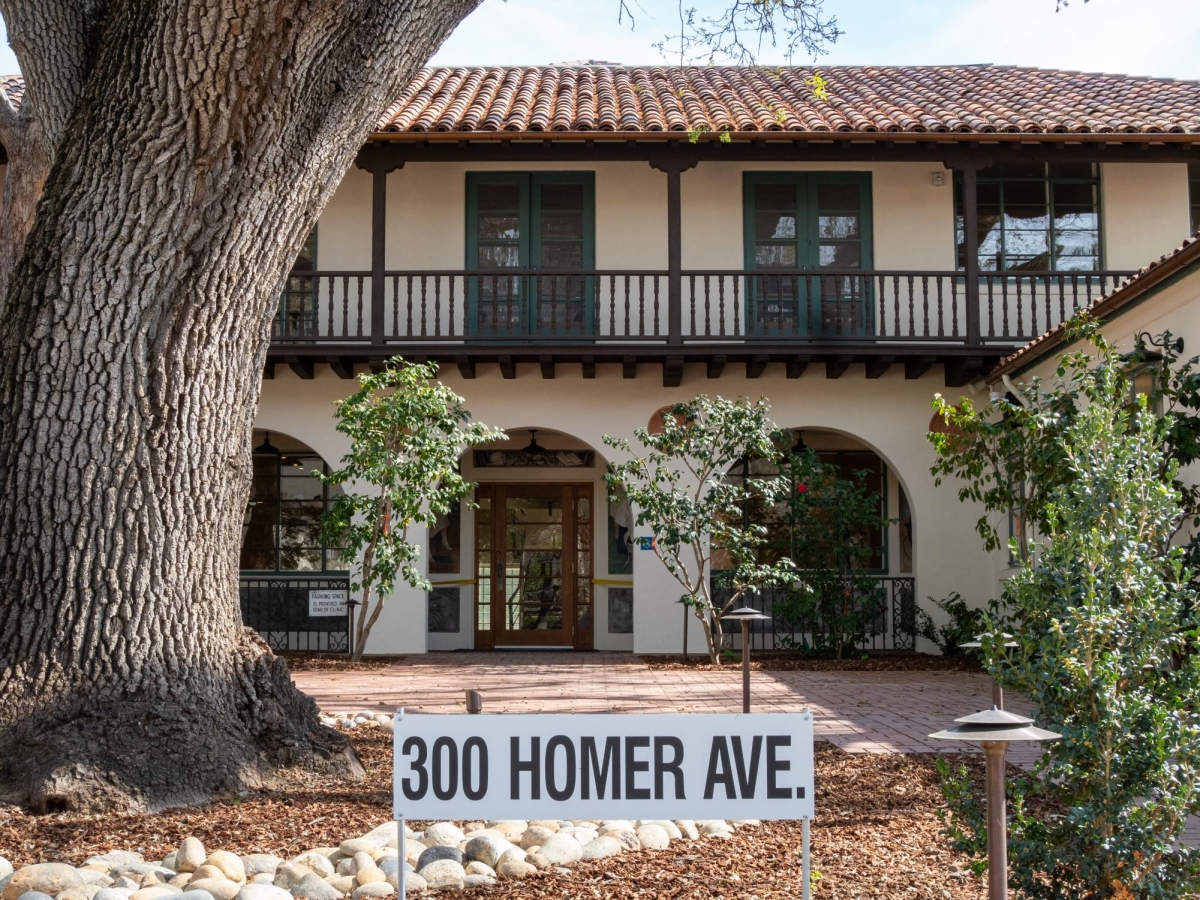In 1969, Stanford University Professor Philip Zimbardo conducted a study in which two cars were abandoned on the streets of two cities: New York City and Palo Alto, according to NPR. Ten minutes later, the car in New York was stripped and destroyed. But in Palo Alto, the car remained untouched for more than a week, gathering parking tickets. Passersby would take off the tickets. When it started raining, someone stopped and put down the hood so the engine wouldn’t get wet.
According to Diane Moon, chief operations officer of the Palo Alto History Museum, the results of that study represent the nurturing nature of Palo Alto.
“That was because of the huge sense of community that had been formed here in Palo Alto,” she said. “We’re different, we’re unique.”
The Palo Alto History Museum aims to show the public the impact that people from Palo Alto have had on the world. The building, located at 300 Homer Ave in Palo Alto, started renovations in 2023. The museum finished construction in January and is currently curating galleries projected to open February 2026. However, during the May Fete Parade this year on May 3, visitors will be able to step into the lobby area to get a preview of the museum’s mission statement in action: “Local history with global impact.”
“It’s that extraordinary nature of Palo Alto,” said Rich Green, director of the museum’s board. “We’re only 67,000 people. … Palo Alto has consistently had global impact. We [the Palo Alto History Museum] are going to probe the depths of a story that’s never been told.”
The museum doesn’t plan to just use traditional artifacts to portray history — parts of the museum building are artifacts themselves. Designed by architect Birge Clark in 1932, the building originally housed the Palo Alto Medical Clinic. In 1981, the clinic transformed into the Palo Alto Medical Foundation and was listed on the National Register of Historic Places.
“That [historical place designation] means there’s only certain things you can do with the building,” Green said. “You cannot modify the exterior, it has to have the original historic look. But, you can rehabilitate it, which means we can bring it up to what it looked like in 1932.”
The building’s historical nature is visible to anyone who sees it. As you walk into the museum, you will see a courtyard filled with camellia flowers and a row of original fresco paintings. Created by Victor Arnotauff in 1932 after working in Mexico with artist Diego Rivera, these frescoes ultimately inspired the murals in San Francisco’s Coit Tower, according to Green.
“Those frescoes by Victor Arnotauff are some of the most famous public artwork in the world,” Green said. “The color ones depict the modern state of history at the time. It was a declaration of ‘This is how cool we are.’”
Besides pre-existing historical remains, the museum committees are currently in the process of curating the artifacts to be exhibited, with each telling a specific story. According to Green, to build their exhibits, the museum has full access to an archive of everything ever made by Hewlett-Packard and a gigantic warehouse collection from the Museum of American Heritage.
Their anchor artifact, a huge piece of the exterior wall of Juana Briones’s home, has already been placed in the lobby. Briones was an extraordinarily powerful and influential woman during the Gold Rush. The wall fragment is made out of adobe, and held together by hand-pounded nails.
“It is one of the oldest, most significant artifacts in Northern California,” Green said.
Regardless of what the building looks like now, for many current Palo Alto residents, the historical medical clinic was a memorable place.
“I was rolling bandages from my dad and sitting in on his patient appointments,” Construction Project Manager Kitzi Tanner said.
Her dad, Joseph B. Tanner, was an orthopedic surgeon in the hospital, making working on the history museum a full-circle moment for her.
According to Green, all the doctors’ office rooms — including the x-ray viewing station, light fixtures, ceiling, veneer flexwood windowsill and outside window glass — along with a doctor’s exam room sink, are preserved. Specifically, a closet that belonged to Esther Clark, the first female physician in the San Francisco peninsula, has been left completely untouched since last used.
Visitors will be able to step back in time while riding the original pull-type elevator, which is rarely built today, according to Moon. Additionally, the uniquely bent wooden railings and terrazzo stairs to the basement and first and second floors and rooftop are all original.
While planning the museum, the board embraced “design thinking,” which was invented in Palo Alto.
To Green, “design thinking” symbolizes getting out of your head and thinking through the perspective of someone else.
“It’s not about me, it’s about you,” Green said. “I hope this museum has nothing in it that is not intentional. No mistakes, no accidents. If something is here, there is a very good reason why it’s here.”
The museum planners specifically focused on catering education to children. They plan to create a scavenger hunt for children to find the parts of the building that match up with historical photos.
“The museum is for people of all ages, but the most important people are the young ones,” Green said. “If you get them in when their brains are forming — two-, three-, four-years-old — those children will always have an affinity for museums.”






